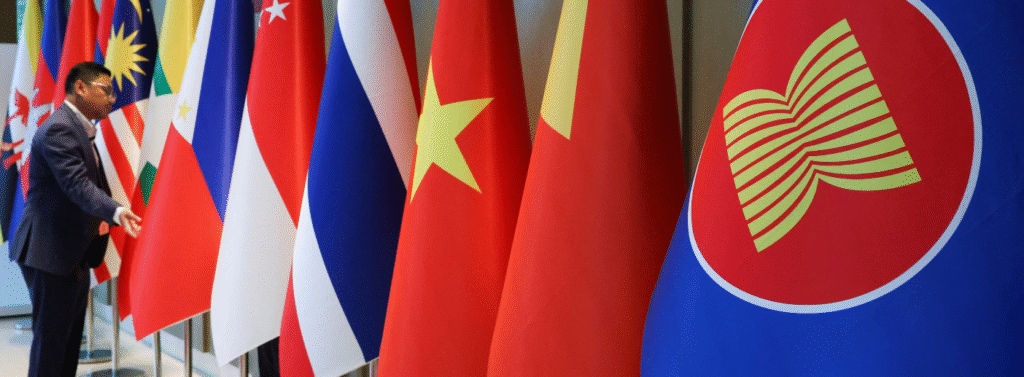Rapid Digital Growth Outpaces National Regulation
Digital platforms have rapidly transformed economies across South-East Asia. However, their expansion has far outpaced national regulatory frameworks. Governments are struggling to address issues like fake news, scams, and algorithmic opacity. These challenges highlight the need for coordinated regional responses to protect users effectively.
The ASEAN Workshop on Regional Recommendations for Digital Platform Regulation marked a pivotal step. Held in Bangkok, it gathered officials from all ten member states alongside international experts. Discussions focused on creating adaptable guidelines that address common threats. Cooperation is seen as essential for tackling borderless digital problems.

Building A Regional Regulatory Foundation
The workshop unveiled research comparing ASEAN’s regulatory gaps with international frameworks. Thailand’s ETDA and Laos’s Digital Government Center led the studies. Their findings underscored fragmented oversight and insufficient transparency obligations across the region. Policymakers aim to establish shared principles without imposing rigid uniform rules.
This cooperative approach allows flexibility for different national priorities. By sharing data and aligning strategies, member states can amplify their collective influence. Early proposals include bloc-wide unsafe goods databases and know-your-business rules. Such measures aim to enhance accountability while respecting national sovereignty.
Learning From Global Policy Models
Speakers highlighted the EU’s common-rule strategy as a successful example. The European Union gained leverage against tech giants by presenting a unified front. ASEAN officials see potential in adopting similar mechanisms tailored to regional contexts. Collective bargaining power strengthens smaller states’ positions in digital governance negotiations.
International experts also shared insights from Japan, the United States, and UNESCO. These perspectives offered valuable guidance on balancing innovation with consumer protection. ASEAN’s model may blend phased cooperation with adaptive policy evolution. This ensures relevance as digital technologies and threats rapidly change.
Recommended Article: Hong Kong Expands AI Surveillance With 60,000 Cameras By 2028
Tackling Algorithmic Risks And Online Fraud
Algorithmic harms and cross-border fraud were recurring themes throughout discussions. Platforms often operate without physical presence, complicating enforcement for smaller nations. Coordinated mechanisms could enable faster responses to malicious activities. Experts emphasized data-sharing agreements and harmonized investigative protocols as critical components.
Cross-border cooperation is vital to address fraudulent schemes that exploit regulatory gaps. Joint task forces and shared databases would improve response times significantly. ASEAN’s collective approach could close loopholes exploited by cybercriminal networks. Protecting users effectively requires both technological tools and legal alignment.
Integrating With ASEAN’s Digital Agenda
ETDA officials outlined integration pathways with ASEAN’s broader digital frameworks. The Digital Economy Framework Agreement and ASEAN Digital Masterplan 2030 are key pillars. Embedding regulatory recommendations within these structures ensures long-term policy coherence. This approach aligns governance efforts with economic growth objectives.
Officials stressed the importance of phased implementation rather than immediate binding rules. Flexible cooperation allows states to tailor measures to domestic contexts. This strategy aims to build trust and capacity progressively across member nations. Integration strengthens ASEAN’s ability to govern digital platforms collectively.
Addressing Domestic Regulatory Fragmentation
Speakers acknowledged that domestic oversight is often fragmented among multiple agencies. Central banks, securities regulators, and transport authorities each manage separate aspects. This scattered responsibility hampers coordinated national responses to digital platform issues. Stronger inter-agency collaboration is required to enhance overall effectiveness.
Professor Wisit Wisitsora-at highlighted this challenge during opening remarks. He emphasized that many platforms lack local presence, complicating enforcement. Unified regional frameworks can compensate for these national structural weaknesses. Collaboration ensures smaller states maintain regulatory influence in the global digital landscape.
A First Step Toward Unified Digital Governance
The Bangkok workshop represents ASEAN’s first concerted move toward unified digital governance. It aims to weave shared principles and cooperative mechanisms rather than impose top-down mandates. Policymakers hope this collaborative model balances innovation with accountability. Success could establish ASEAN as a global regulatory voice for digital platforms.
Next steps include consultations across member states and with civil society groups. Outcomes will feed into final recommendations submitted to the ASEAN Secretariat. If implemented effectively, these measures could create a safer, more transparent digital ecosystem. The initiative underscores ASEAN’s growing role in shaping digital platform governance.

















